Wildlife Forensics
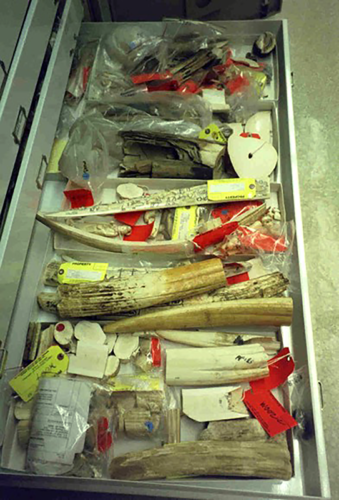
What is wildlife forensics?
Wildlife forensics applies science to legal cases involving wildlife.
Human and wildlife forensics are similar in that both use science to answer a legal question. But there’s a huge difference. Namely, wildlife forensics deals with thousands of species while human forensics deals with just one.
That means wildlife forensics has an extra job of figuring out what the victim is.
Because some species are protected and others are not, for wildlife crime investigations figuring out what the victim is often essential to establishing that a crime even took place.
Why an animal crime lab?
Prosecution of a suspect for animal trafficking requires establishing that person’s guilt “beyond a reasonable doubt.” That means establishing that a crime occurred and then linking the suspect to it.
With trafficking of illegal wildlife products, many of the items bought and sold look nothing like the animal they came from. That makes it difficult to prove they came from a species whose trade is illegal. As a result, identifying the victim is an essential first step in wildlife crime investigations. The identity, or species, of the animal remains must be established to determine which, if any, laws have been violated. Only then can a prosecutor link the suspect to a crime.
The United States Fish and Wildlife Service Forensics Lab is the world’s first and only full-service lab dedicated to crimes against wildlife.
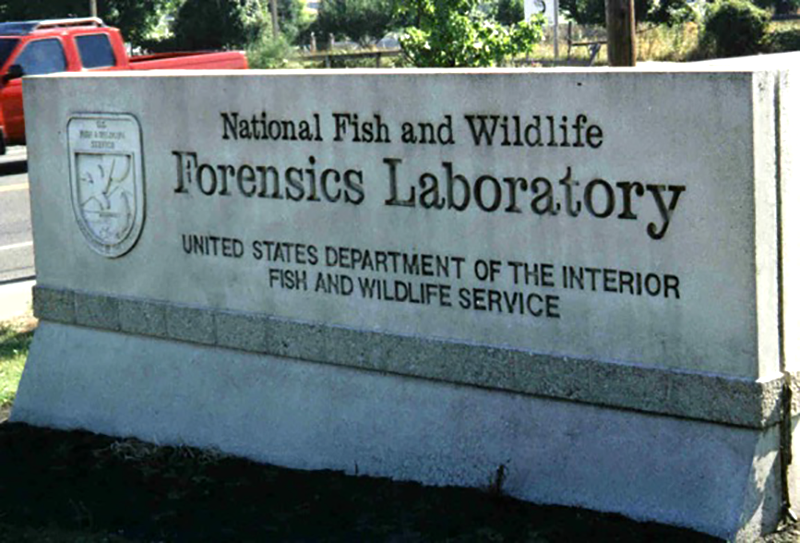
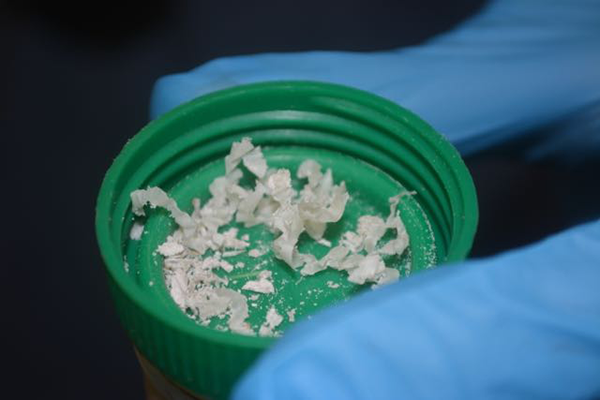
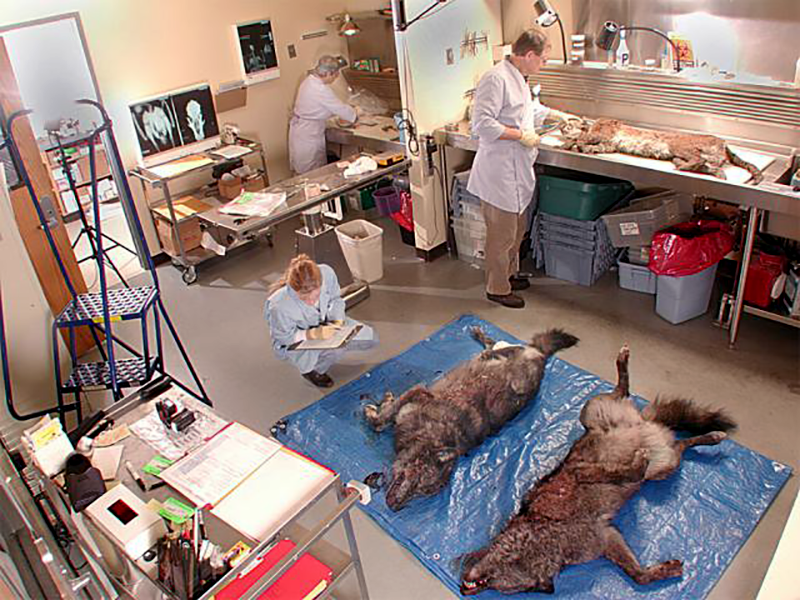
What does the wildlife crime lab do?
As with any crime lab, this facility has two jobs:
- to identify evidence; and
- to link the suspect and crime scene.
Like standard police labs, it uses physical evidence such as fingerprints, tire tracks, bullets, gunshot residues, poisons and DNA to reveal what might have happened to its animal victims and to identify possible suspects.
Yet it has an extra job: figuring out what the victim is.
The lab handles over 30,000 species of victims, which makes a regular police lab, with a mere one species to worry about, look like a vacation spot. The lab’s scientists don’t just work feverishly to conserve valuable wildlife, but they are forging a new field of science as they go.
Their work is complicated because they have no set procedural guidebook to follow, especially as victims often arrive as unidentifiable parts—a carved statuette, or a belt, or maybe a small vial of pills—and the tricks of good old-fashioned police work, like finding a reliable witness, don’t apply.
Day to day, nobody knows what to expect. The lab rarely receives easily recognizable evidence, like a whole animal, but instead gets pieces, like bones, skins, or dried blood, or products, like powdered medicine. The victim’s identity is lost as all the things that would have told you “this is from an elephant” or “this is from a turtle” simply aren’t there.
The scientific problem is to reverse the manufacturing process by taking the processed product and figuring out what is unique to the part of the species that it supposedly contains. This is complicated by non-standard production processes that make it difficult to know what other things might be mixed into the pot.
The lab’s scientists must also decide what approach to take. In contrast, regular crime labs can use tried and true technology to come up with results where they know the chance for error. For example, they routinely use DNA testing for rape cases to identify suspects. While infinite variations of DNA exist, the cases themselves fall into predictable patterns that let the labs employ standard techniques over and over.
The wildlife crime lab is not so lucky. Not only do its cases vary from one to the next, with powdered bear bile one moment and sturgeon eggs the next, but the more an item is processed, the less likely it is to have species defining characteristics. Hence, the lab’s main tasks are to figure out what techniques to apply to the evidence, identify a unique characteristic contained in the animal part in question, and then develop a methodology that finds that trait consistently.
All of this takes time, often years, and requires a good amount of detailed knowledge of the species. That’s why, for all of the high-tech equipment available to the lab, nothing can ever substitute for human expertise.
Go inside the National Fish and Wildlife Forensics Laboratory
- The National Fish and Wildlife Forensics Laboratory -- https://www.fws.gov/lab/
- Lab tour -- https://www.fws.gov/lab/tour.php
- Identification notes and guides -- https://www.fws.gov/lab/publications.php
- Feather atlas -- https://www.fws.gov/lab/featheratlas/index.php
- The lab on YouTube: https://www.youtube.com/watch?v=qdeNuHUpfMA
- CNN segment on forensics lab solves crimes against animals -- http://www.cnn.com/videos/tv/2017/10/29/gbs-wildlife-csi-forensic-lab.great-big-story
- PBS News Hour segment “This lab is like CSI…for endangered wildlife” – https://www.pbs.org/newshour/science/oregon-lab-helps-solve-worlds-crimes-nature
- ABC News: Animal CSI: Lab Targets Illegal Species Traffic -- http://abcnews.go.com/Nightline/animal-csi-lab-fights-endangered-species-black-market/story?id=8995270
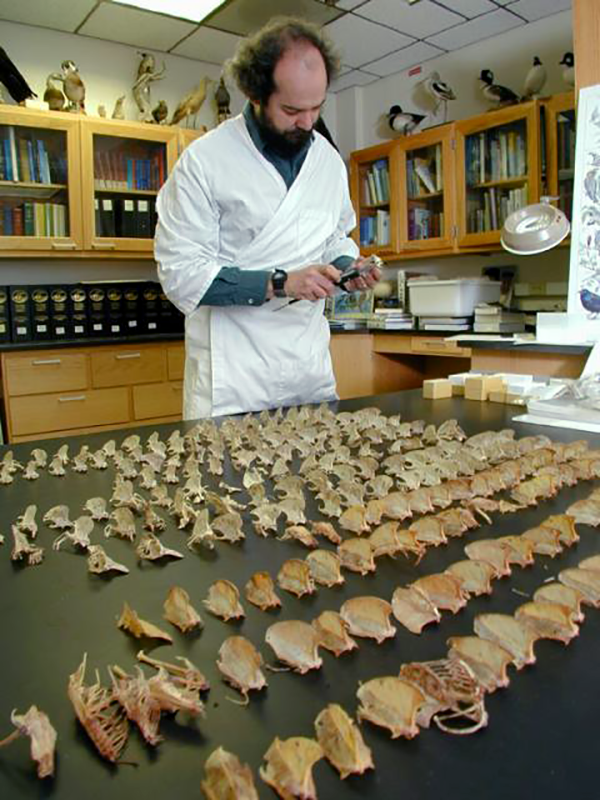
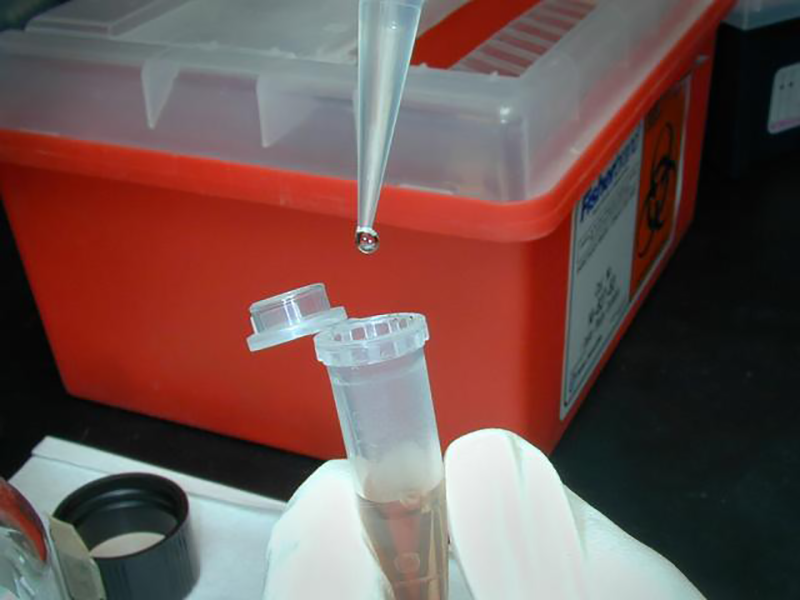
The Smithsonian Institution’s Feather Identification Lab
- Profile: https://www.faa.gov/airports/airport_safety/wildlife/smithsonian/
- CSI for Birds: Scientists Use Forensic Techniques to Improve Airport Safety -- http://vertebrates.si.edu/birds/feathers/
- Webcast with Smithsonian’s bird detective, Carla Dove -- http://insider.si.edu/2014/02/qrius-smithsonian-science-how-webcast-meet-the-bird-detective-carla-dove/
RhODIS DNA Indexing System -- a project initiated by the Veterinary Genetics Laboratory of the University of Pretoria
- RhODIS -- http://rhodis.co.za/
- Special report: The RhODIS rhino DNA database is putting rhino poachers in the cross hairs -- https://mg.co.za/article/2016-07-15-the-rhodis-rhino-dna-database-is-putting-rhino-poachers-in-the-cross-hairs
Articles on Wildlife Forensics
- Laurel Neme's articles on Wildlife Forensics
- C&EN: The U.S. Fish & Wildlife forensics lab, the nation’s CSI: Wildlife team -- https://cen.acs.org/articles/94/i21/CEN-profiles-US-Fish-Wildlife.html
- New Scientist: How forensic science can stop slaughter endangered wildlife -- https://www.newscientist.com/article/2105629-how-forensic-science-can-stop-slaughter-of-endangered-wildlife/
- Time: Wildlife Forensics Lab -- http://content.time.com/time/photogallery/0,29307,1891729,00.html
- National Geographic: A powerful weapon against ivory smugglers, DNA testing -- https://blog.nationalgeographic.org/2013/05/23/a-powerful-weapon-against-ivory-smugglers-dna-testing/
- Mongabay: Wildlife forensics unmasks poachers and traffickers -- https://wildtech.mongabay.com/2015/07/wildlife-forensics-unmask-poachers-and-traffickers/
- Mongabay: Fighting rhino poaching in India, CSI style -- https://news.mongabay.com/wildtech/2017/02/fighting-rhino-poaching-in-india-csi-style/
Organizations
- Society of Wildlife Forensic Scientists -- http://www.wildlifeforensicscience.org/
- TRACE Wildlife Forensics Network -- https://www.tracenetwork.org/
- University of Florida Wildlife Forensic Science -- https://wildlife.forensics.med.ufl.edu/about/
